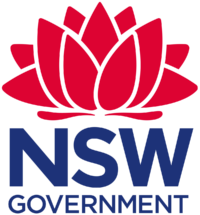NSW Emergency Response Beekeeper update
13 August 2022Beekeeper update 13 August 2022 NSW Department of Primary Industries (NSW DPI) is continuing efforts in response to the Varroa mite incursion, confirmed as Varroa destructor, found in biosecurity surveillance […]

Beekeeper update13 August 2022 NSW Department of Primary Industries (NSW DPI) is continuing efforts in response to the Varroa mite incursion, confirmed as Varroa destructor, found in biosecurity surveillance hives at the Port of Newcastle. New Emergency Order in placeThe Biosecurity (Varroa Mite) Emergency Order 2022 (No.21) has now been published and has commenced. The order includes amendments to provisions for destruction of feral bees in all zones, changes to manage feral swarms in the blue General Biosecurity Zone and changes to provisions for the movement of honey supers relating to all Emergency Zones. Feral bees· Provisions allowing destruction of feral bees have been amended to limit the persons who can capture and destroy those bees to registered beekeepers and qualified pest controllers. · Clauses 19, 39, 46 and 51 relate to feral bees. Managing feral swarms in the blue zone· Registered beekeepers in the Blue zone are allowed to capture and manage feral swarms. · Clause 51 relates to managing feral swarms in the General Emergency Zone (blue zone). Movement of honey supers in purple, yellow and blue zones· A change to allow movements of honey supers from within and between the purple, yellow and blue zones, subject to conditions. · Clauses 42, 47 and 52 relate to the movement of honey supers in the Surveillance, Notification and General Emergency zones (purple, yellow and blue zones) Movement of honey supers in red zones· New provision to allow supers to be moved out of the red zone (after being wrapped for 21 days and subject to other conditions), but not within or into the red zone. · Clauses 32, 33, 34 and 35 relate to provisions for movement of honey supers in the Eradication Zone. The Emergency Order can be found at www.dpi.nsw.gov.au/varroa. — Movement of Queen bees and Queen cells from within NSW is not permittedIn response to concerns about the movement of Queen bees and Queen cells from beekeepers, the Varroa mite Incident Management Team have carried out a risk assessment which has deemed the movement of Queen bees and Queen cells, including Queen banks, from within NSW to be too high a risk at this point in time and is not permitted. We understand this has significant impacts on our beekeeping industry. We are continuing to review the results of ongoing surveillance, and combined with the data from almond surveillance operations we will be providing an update on this position by 1 October 2022. The current position is based on insufficient evidence available at this time to provide the level of confidence required to allow Queen bee and Queen cell movements safely. This is especially so given we know queen bee and nurse bees are one of the highest likely vectors for Varroa destructor. Beekeepers in NSW can assist with improving confidence in the safety of Queen bee and Queen cell movement from within NSW by conducting alcohol wash surveillance on their apiaries and reporting these results to NSW DPI at www.dpi.nsw.gov.au/varroa — Current situationDPI tracing and surveillance work has confirmed 4 new cases of Varroa Mite as at 6pm Friday 12 August, as field officers continue hive inspections with beekeepers across the state. These detections bring the total number of infected premises to 97 since Varroa mite was first identified during routine surveillance at the Port of Newcastle on 22 June. The new infected premises were at Salt Ash, Mayfield East and Beresfield, all within the eradication zone. All cases to date either have clear links through the movement of hives or equipment, or are geographically related. Intensive surveillance and tracing activities, in addition to the state-wide lockdown and creation of emergency zones, continue to play a critical role in emergency response efforts. Beekeepers in the surveillance zones should continue monitoring their hives for the presence of Varroa mite. You can keep up to date with the latest information on the NSW DPI Biosecurity Facebook page or the DPI website at www.dpi.nsw.gov.au/varroa — Update on Eradication plan in the Hunter area Varroa mite Eradication Emergency ZoneAll honeybee hives in the Eradication zone will be euthanised. Euthanasia of some hives has already been carried out, predominantly centred around infected hives. Plans are being finalised now for wider ranging euthanising operations to occur throughout the red Eradication Zone and these activities are expected to ramp up in the coming weeks. Further details and instructions for beekeepers in the Eradication Zone will be provided and up to date information published at www.dpi.nsw.gov.au/varroa — What should I do?For the most up to date information, factsheets and frequently asked questions are available on the DPI website. Use the interactive map to search for your address, to determine what emergency zone you’re situated in. If you find Varroa mites in hives you must tell NSW DPI immediately. You can notify NSW DPI by: · calling the Exotic Plant Pest Hotline 1800 084 881 · using the online form. — Your wellbeing NSW DPI recognises the impact the varroa mite incursion and eradication process has on our honeybee industry. Read our Assistance Guide for Beekeepers for various assistance available to impacted beekeepers to support them through the emergency response. |
